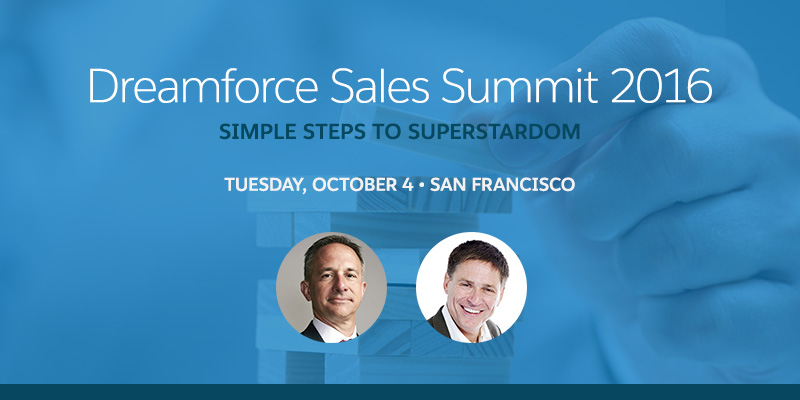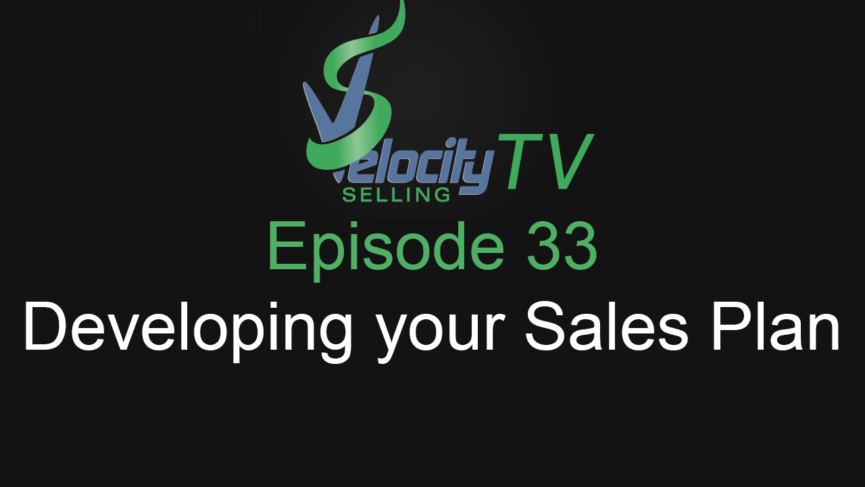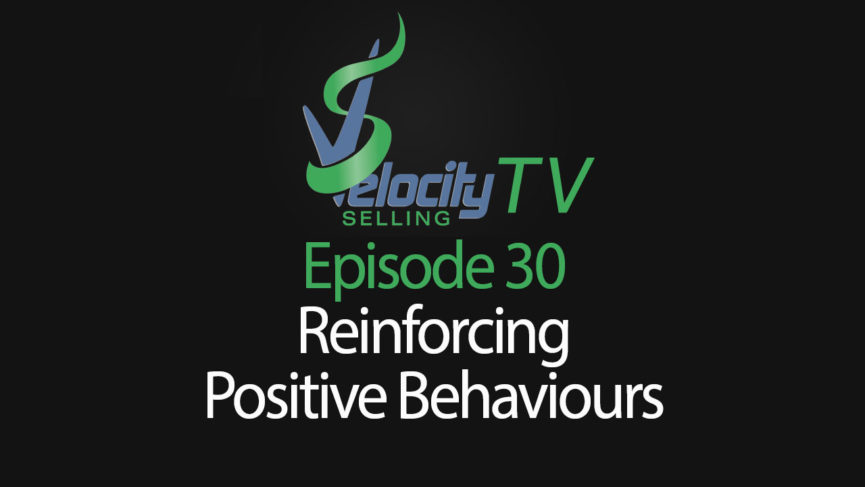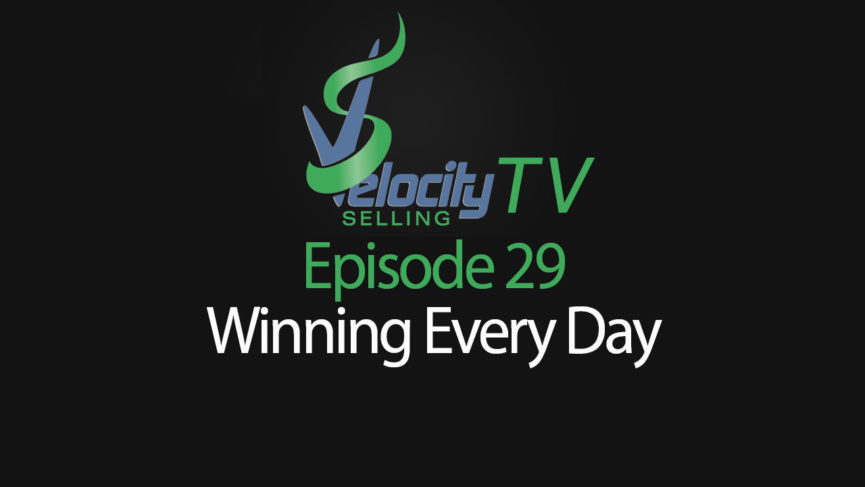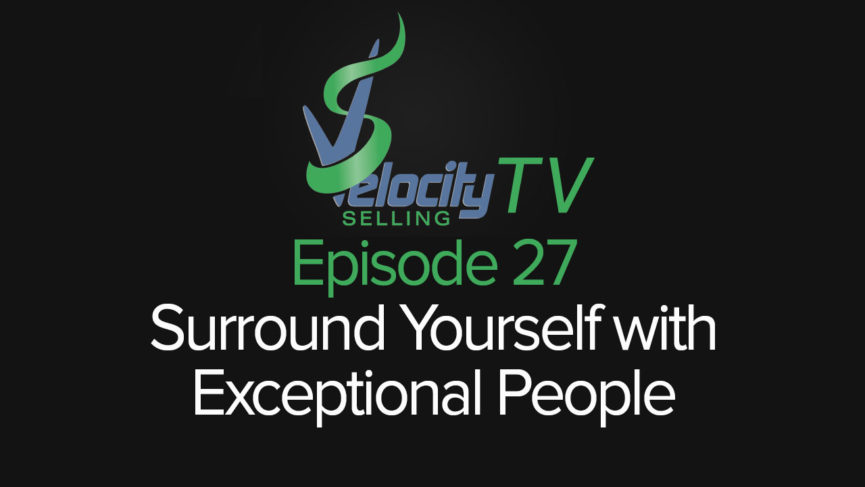Pay time vs no pay time. When it comes to your time spent during your work week, there are times throughout your schedule that are known as pay times and no pay times. In order to fully access your working potential and your overall success, you must be able to define your pay times and your no pay times.
Velocity Selling TV Episode 35: Pay Time vs No Pay Time
Matthew: Welcome back to Velocity Selling TV. I’m your host Matthew Whyatt and we’ve got Bob Urichuck up in Ottawa, Canada. Hi Bob, welcome.
Bob: Thanks Matthew, good to see you again.
Matthew: Hey, Bob last time, we sort of went for the no. You know the idea is to see if we can get a better return on time invested, as in ROTI, and that’s a fantastic idea, concept, that I really love sharing with people, is money comes and money goes, but time just goes. I love how you said that. So getting a better return on time invested. Find out where your points in your sales process are falling down or even taking up the most time, and see, thinking a little bit differently. How can we shortcut that and get better bang for our buck? Better return on time invested? So in training and what I would like to talk about and I’d love for you to just go through this is, a concept of when you’re most effective as a salesperson and I think you put it as pay time or no pay time, is that right?
Bob: Yes. That’s right. So what we lead up to is when we know, we track our behaviours and know when we’re getting our best payback, we have to then schedule our time, our week, based on pay time, no pay time. I define pay time as anything to do with a buyer. When are buyers available? So if you’re in real estate, insurance, buyers are available in the evenings and weekends. If you’re in what we call B2B sales, it’s Monday to Friday, 9-5 sort of thing. So what we have to do is take a look at our week and define when do we get the best results? For example, using B2B, Business to Business sales, Monday morning, is that pay time?
Matthew: Definitely not.
Bob: No. Nobody wants a sales rep on their case first thing Monday morning. So we call that No Pay Time. Now, what we need to do is define all the activities that are pay time activities and all the activities that are no pay time activities.
Matthew: Yeah.
Bob: Let me play with you here Matthew and see if I can get you to guess a few. Doing your expanse account, pay time or no pay time?
Matthew: No pay time.
Bob: You got it. Planning your week?
Matthew: That’s no pay time.
Bob: Returning a customer’s call?
Matthew: Definitely paytime.
Bob: You got it. Prospecting?
Matthew: Definitely pay time.
Bob: Networking?
Matthew: Definitely pay time.
Bob: Sales training?
Matthew: No pay time.
Bob: You got it. And that’s the one that most people have to understand what we do is we do the training during no pay time because if we take you out of the field for training, well you’re losing commissions. Your company is losing revenue.
Matthew: Yeah.
Bob: And so we need to look at these things. Customer service is pay time, sales training is no pay time. So, look at your week, look at your month and define the parts basically, before you go to work, pay time for yourself as well, doing the things that are important, family time, like, you went to the gym this morning, that’s a good thing for you. That’s to me, pay time. It gives you reward because now you’re going to feel better during the day and you’re going to get better results for it.
Matthew: Absolutely.
Bob: And then you know, look at the other thing, Friday afternoon’s a no pay time. So use Monday mornings and Friday afternoons as a period to tie up the week and plan out your next week. And I always say to people making appointments, always be booking a week ahead. Is your sales leader going to be on your case if you’re booked all next week?
Matthew: No, not at all.
Bob: Exactly, so let’s be proactive here. Let’s take control of our business, let’s identify our pay time and no pay time periods and make the best of it. I’ll never forget a story. My boss came to me one day and he called me and he said I need you in a meeting tomorrow at 10:00. I said: Wednesday 10:00, that’s pay time to me. He said, what are you talking about? I said, you gave me such a massive target that I broke it down to day’s and tomorrow is worth this much money. Are you willing to discount my target by me coming into the meeting? He says ‘no’. And I said ‘ok so don’t expect me there.’
Matthew: Fantastic.
Bob: Seriously, we can’t let sales leaders run us like that. If you want to have me in a meeting, get me in a meeting during no pay time, where I can’t be making commissions or I’m not making sales targets.
Matthew: Fantastic Bob, ‘cause as you said in the last episode, we’re the CEO’s of our own private services organisation, Me INC. ,
Bob: You got it.
Matthew: You got to manage your client, sometimes may be your manager, or the owner of the business.
Bob: You got it. Because we are the owners of our business and we can lead or we can follow. And I’m sorry, I’d rather lead.
Matthew: Perfect. And actually, that’s why, it’s Monday morning here for me, and on Monday’s I’ve got a whole bunch of sales training appointments because I have taught that to my clients. Pay time, no pay time,
Bob: You got it.
Matthew: and let’s go in and get this done.
Bob: Well go on and make yourself some money Matthew and have yourself a great week.
Matthew: Fantastic Bob see you later. Bye-bye.
Bob: Take care.
Monthly Goal Monitoring Chart
Download the Monthly Monitor Chart
To access the full playlist for Your Rights
Click Here



